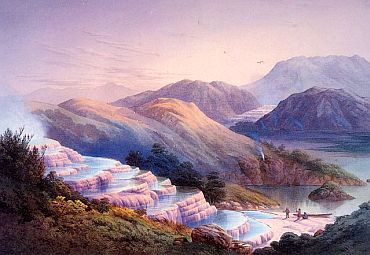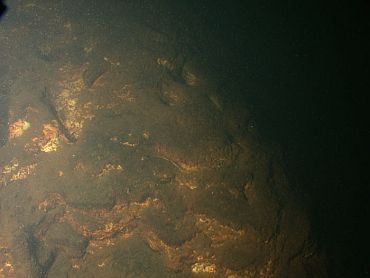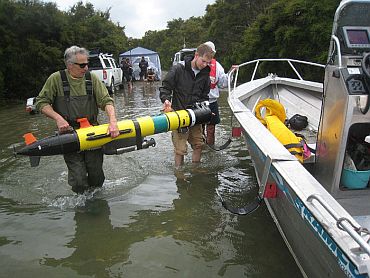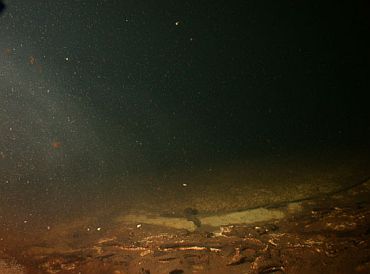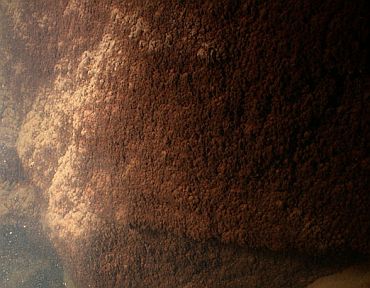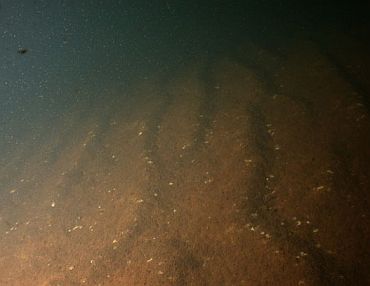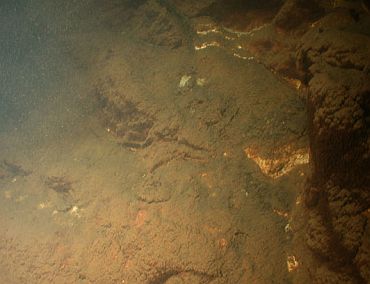 | « Back to article | Print this article |
Rediscovered! Eighth wonder of the world
Last updated on: February 8, 2011 13:06 IST
Scientists have rediscovered what they claim is the eighth wonder of the world -- Pink and White Terraces in New Zealand, which were buried in mud for a 100 years, losing some charm.
Until the late 19th century, the Pink and White Terraces along Lake Rotomahana on the North Island, attracted tourists from around the world, interested in seeing beautiful natural formations created by a large geothermal system.
But the eruption of Mt Tarawera on June 10, 1886, buried the terraces in sediment and caused the lake basin to enlarge, engulfing the land where the terraces stood.
Click on NEXT to read further...
Rediscovered! Eighth wonder of the world
Last updated on: February 8, 2011 13:06 IST
For more than a century, people have speculated whether any part of the Pink and White Terraces survived the eruption. Now, an international team has located portions of the long-lost Pink and White Terraces, using autonomous underwater vehicles (AUVs) to map the bottom of Lake Rotomahana.
Rediscovered! Eighth wonder of the world
Last updated on: February 8, 2011 13:06 IST
Team leader Cornel de Ronde of GNS Science in New Zealand said the scientists were elated by the rediscovery. "The first side-scan sonar image gave a hint of a terraced structure so we scanned the area twice more and we are now 95 per cent certain we are seeing the bottom two tiers of the Pink Terraces," de Ronde said.
Rediscovered! Eighth wonder of the world
Last updated on: February 8, 2011 13:06 IST
Side-scan sonar and bathymetric data collected by two REMUS 100 AUVs clearly show crescent-shaped terraced structures in about 60 meters of water where the Pink Terraces were located prior to 1886; they are covered by brownish lake sediment, say the scientists. After detecting areas of interest with the AUV's sonar systems, the team used the underwater camera system to capture images of the lake floor where they were able to photograph some of the stepped terrace edges.
Rediscovered! Eighth wonder of the world
Last updated on: February 8, 2011 13:06 IST
Dr de Ronde said the rest of the Pink Terraces were either destroyed during the eruption, or are still concealed under thick sediment not able to be penetrated by high- frequency AUV sonars.The scientists found no sign of the larger White Terraces in the part of the lake that matched their location prior to 1886.
The two terraces, part of a very large on-land geothermal system, were separated by several hundred meters prior to the eruption.
Rediscovered! Eighth wonder of the world
Last updated on: February 8, 2011 13:06 IST
Scientists hope the data collected during this expedition will help them better understand how geothermal systems respond to disruptions of this kind. "It was very gratifying to take the tools and knowledge we've developed for ocean research and apply them to work in the lake, especially for a scientific project with so much Maori cultural significance.
Rediscovered! Eighth wonder of the world
Last updated on: February 8, 2011 13:06 IST
"We hope the success in Lake Rotomahana is the first of many scientific collaborations in this part of the world where there are many interesting research problems to investigate," Dr de Ronde said. The project was a collaboration involving GNS Science, Woods Hole Oceanographic Institution in Massachusetts, Lamont -Doherty Earth Observatory at Columbia University in New York, National Oceanic and Atmospheric Administration in Seattle and the University of Waikato.
